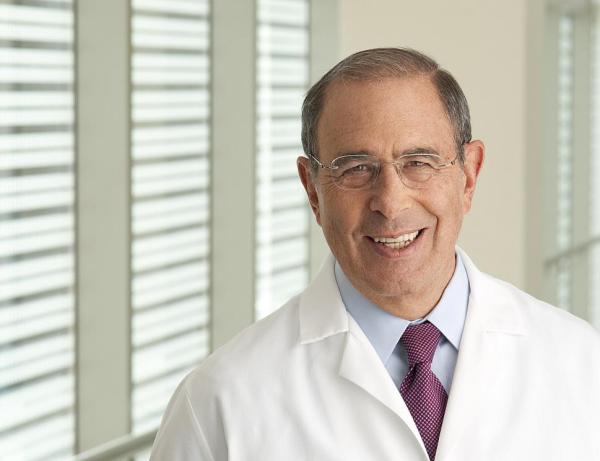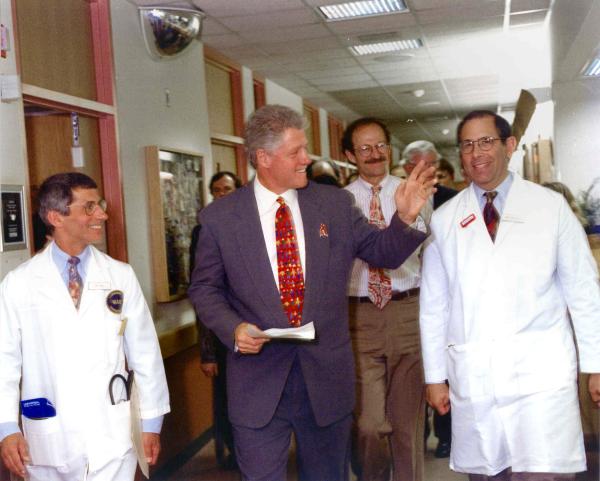TRIBUTE: John Gallin, NIH Catalyst ‘Founding Father,’ 1943–2024

CREDIT: NIH CC
John Gallin
John Gallin, an eminent clinician-scientist and longest-serving director of the NIH Clinical Center, died on October 10 at the age of 81.
Much has been and will continue to be written about Gallin’s scientific legacy. Perhaps lesser known about his NIH contributions, however, is that he conceived the need for this very newsletter: The NIH Catalyst.
In fact, he pitched the idea in 1992 to then-director Bernadine Healy and found enthusiastic support from Lance Liotta, who had just been appointed DDIR and had told the NIH scientific directors that he hoped to serve as a catalyst to implement their ideas. Hence, the origin of the name of this newsletter.
“The Catalyst became more of a newsletter that chatted with the community,” he told former Catalyst editor-in-chief Laura Stephenson Carter in a 2023 interview. “That was the goal—telling people who was there, what was happening. It’s become a real part of the intramural program.”
Gallin served for 52 years at NIH, with 30 of those years as an editor of the Catalyst. From its first issue in 1993 through the March–April 2023 issue, when he retired from the NIH, readers could often find his byline accompanying guest editorials that reflected his commitment to the scientific enterprise. He had written about strengthening partnerships outside of the NIH, the establishment of the first clinical research curriculum at the CC, and much more.
Throughout 182 issues of this newsletter, Gallin read each one thoroughly and provided discerning and illuminating feedback. We treasured him greatly and we will miss him dearly.
An Excerpt from the “History of the NIH Intramural Research Program, 1984–2024”

CREDIT: ONHM
Anthony Fauci, President Bill Clinton, Harold Varmus, and John Gallin tour the CC in 1995. Read more about Gallin’s life and career in this Office of NIH History and Stetten Museum oral history.
Gallin was a man of many stories. Below is one such story about his interaction with President Bill Clinton in 1995, which very well may have led to the funding for the Clinical Research Center. The story is an excerpt from a book in progress about the history of the NIH Intramural Research Program, 1984–2024, by former-DDIR Michael Gottesman and Christopher Wanjek, OIR’s director of communications.
In 1991, Bernadine Healy, the NIH director at the time, green-lighted a proposal to build a new clinical facility. The next NIH director, Harold Varmus, along with then-HHS Secretary Donna Shalala championed the project. But nevertheless, Congressional funding lagged—until Bill Clinton came to visit. The year was 1995. President Clinton was to visit the Children’s Inn on Saturday, August 5, followed by a quick show-and-tell at the Warren Grant Magnuson Clinical Center (CC). CC Director John Gallin was understandably anxious, given all his facility concerns. The night before the visit, Gallin awoke from a panic dream and was consumed by the worry that the CC’s toilets might not be up to snuff, as was sometimes the case. What if the President needed to use one during his visit, he thought. In the middle of the night, Gallin drove to the NIH to inspect and indeed clean toilets.
The next day, President Clinton sat through a presentation on the 14th floor of the CC. The bathroom was clean; no problem there. After the presentation, Gallin was to escort him down the stairwell three floors to go on clinical rounds. He’d be alone with the President. What could he say about the true state of the CC and the predicament he found himself in the night before? Flushed with courage, Gallin said, “Mr. President, this looks like a great hospital, doesn't it?” The President agreed enthusiastically. “Well,” Gallin added, “it’s falling apart, and we need a new building.” President Clinton stopped on the stairs and said, “What are you talking about?” So, Gallin gave him his somewhat polished 30-second spiel and then went on rounds.
Gallin might have struck the right chord with President Clinton. Soon after, Congress approved $23 million in fiscal year 1996 for design of what was then called the Clinical Research Center (CRC) and then $90 million the following fiscal year to begin the construction. The project would cost approximately $600 million and would be named the Mark O. Hatfield Clinical Research Center in honor of the Republican Senator from Oregon who chaired the Senate Appropriations Committee and championed medical research. The CRC was added to the north side of the Building 10 complex, a new home for all patient beds and nearly all of the clinics. Construction began in earnest by 1999, led by Yong-Duk Chyun in ORF, and the exterior was largely complete by 2002. Dedication was on September 22, 2004, and patients then on the Magnuson side moved in soon after.
This page was last updated on Tuesday, November 5, 2024
